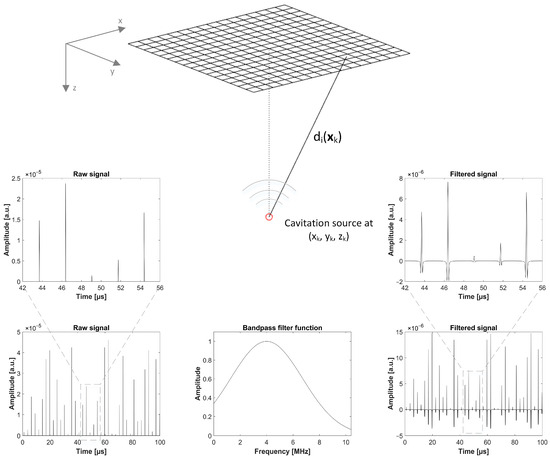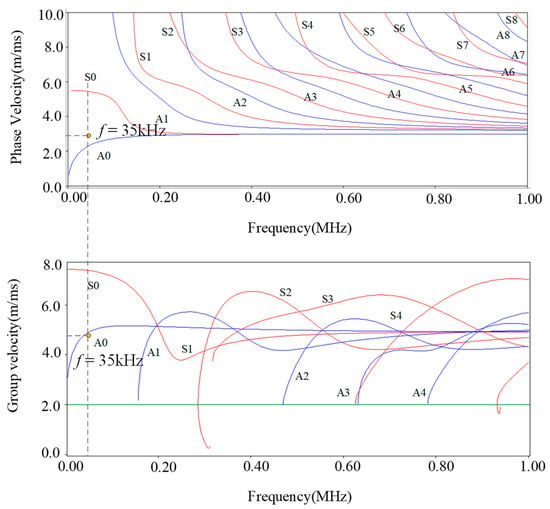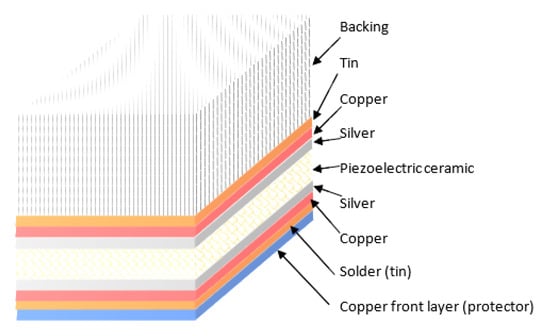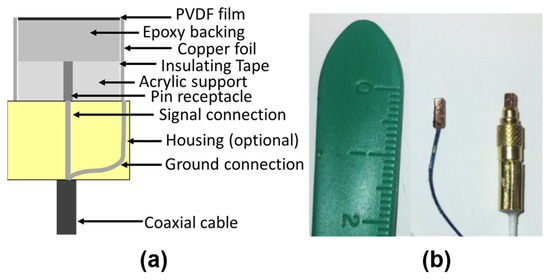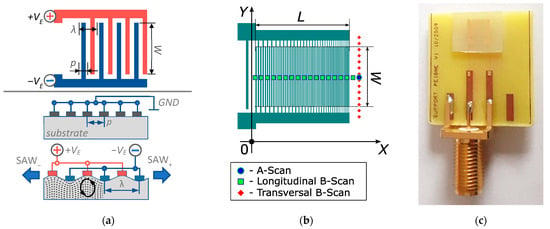Ultrasound Transducers
A topical collection in Sensors (ISSN 1424-8220). This collection belongs to the section "Physical Sensors".
Viewed by 9279
Share This Topical Collection
Editors
 Prof. Dr. Xiaoning Jiang
Prof. Dr. Xiaoning Jiang
 Prof. Dr. Xiaoning Jiang
Prof. Dr. Xiaoning Jiang
E-Mail
Website
Collection Editor
Department of Mechanical & Aerospace Engineering, North Carolina State University, 911 Oval Drive, Raleigh, NC 27695, USA
Interests: micro/nanofabrication of smart materials and structures; ultrasound sensors and transducers; ultrasound imaging, therapy and sensing; sensors and transducers for extreme environments
Special Issues, Collections and Topics in MDPI journals
 Dr. Jianguo Ma
Dr. Jianguo Ma
 Dr. Jianguo Ma
Dr. Jianguo Ma
E-Mail
Website
Collection Editor
School of Instrumentation and Optoelectronic Engineering, Beihang University, Beijing 100191, China
Interests: piezoelectric ultrasound transducers; multi-frequency ultrasound transducers; optical ultrasound sensing; biomedical ultrasound imaging and therapy; quantitative ultrasound for intelligent diagnosis
Special Issues, Collections and Topics in MDPI journals
Topical Collection Information
Dear Colleagues,
Acoustics has profoundly affected today’s world in a broad range of technologies, including underwater sonar, audio communication, industrial non-destructive testing (NDT), industrial sensing, chemical and biological sensing, smart city, precision actuation, material processing and manufacturing, medical imaging, medical therapy, etc. Ultrasound transducers, such as the converter between mechanical vibrations and electrical signals, have met unprecedented challenges for such a broad range of applications. This Topical Collection aims to bring together recent research and developments on materials, design, fabrication, multiphysics transduction, characterization, system integration, and applications of ultrasound transducers.
In this Topical Collection, we look forward to receiving papers on a wide range of research topics, including but not limited to the following themes:
- Ultrasound transducer materials/metamaterials and structures;
- Design and fabrication of various ultrasound transducers, such as piezoelectric, CMUT, PMUT, PC-MUT, and other types of transducers and transducer arrays;
- Ultrasonic-wave-involved multi-physics transduction, including photoacoustics, optical fiber-based ultrasonic sensing, micro-ring ultrasonic sensing, magnetoacoustic tomography, etc.;
- Transducer characterization technologies;
- Integration of ultrasonic systems, including electrical excitation, signal processing, impedance matching, ASIC, etc.;
- Applications of ultrasound transducers, including biomedical imaging, therapeutic intervention, NDT, acoustic tweezing, smart electronics, ultrasound gene transfection, acoustic-assisted manufacturing, etc.
For this Topical Collection, you are welcome to submit review articles or original research associated with ultrasound transducers and their applications. There is a particular interest in papers with novel designs of ultrasound transducers and ultrasonic applications in biology and medicine.
Prof. Dr. Xiaoning Jiang
Dr. Jianguo Ma
Collection Editors
Manuscript Submission Information
Manuscripts should be submitted online at www.mdpi.com by registering and logging in to this website. Once you are registered, click here to go to the submission form. Manuscripts can be submitted until the deadline. All submissions that pass pre-check are peer-reviewed. Accepted papers will be published continuously in the journal (as soon as accepted) and will be listed together on the collection website. Research articles, review articles as well as short communications are invited. For planned papers, a title and short abstract (about 100 words) can be sent to the Editorial Office for announcement on this website.
Submitted manuscripts should not have been published previously, nor be under consideration for publication elsewhere (except conference proceedings papers). All manuscripts are thoroughly refereed through a single-blind peer-review process. A guide for authors and other relevant information for submission of manuscripts is available on the Instructions for Authors page. Sensors is an international peer-reviewed open access semimonthly journal published by MDPI.
Please visit the Instructions for Authors page before submitting a manuscript.
The Article Processing Charge (APC) for publication in this open access journal is 2600 CHF (Swiss Francs).
Submitted papers should be well formatted and use good English. Authors may use MDPI's
English editing service prior to publication or during author revisions.
Published Papers (5 papers)
Open AccessArticle
Optimization of 3D Passive Acoustic Mapping Image Metrics: Impact of Sensor Geometry and Beamforming Approach
by
Sarah Therre, Marc Fournelle and Steffen Tretbar
Viewed by 417
Abstract
Three-dimensional passive acoustic mapping (PAM) with matrix arrays typically suffers from high demands on the receiving electronics and high computational load. In our study, we investigated, both numerically and experimentally, the influence of matrix array aperture size, element count, and beamforming approaches on
[...] Read more.
Three-dimensional passive acoustic mapping (PAM) with matrix arrays typically suffers from high demands on the receiving electronics and high computational load. In our study, we investigated, both numerically and experimentally, the influence of matrix array aperture size, element count, and beamforming approaches on defined image metrics. With a numerical Vokurka model, matrix array acquisitions of cavitation signals were simulated. In the experimental part, two 32 × 32 matrix arrays with different pitches and aperture sizes were used. After being reconstructed into 3D cavitation maps, defined metrics were calculated for a quantitative comparison of experimental and numerical data. The numerical results showed that the enlargement of the aperture from 5 to 40 mm resulted in an improvement of the full width at half maximum (FWHM) by factors of 6 and 13 (in lateral and axial dimension, respectively). A larger array sparsity influenced the point spread function (PSF) only slightly, while the grating lobe level (GLL) remained more than 12 dB below the main lobe. These results were successfully experimentally confirmed. To further reduce the GLL caused by array sparsity, we adapted a non-linear filter from optoacoustics for use in PAM. In combination with the delay, multiply, sum, and integrate (DMSAI) algorithm, the GLL was decreased by 20 dB for 64-element reconstructions, resulting in levels that were identical to the fully populated matrix reconstruction levels.
Full article
►▼
Show Figures
Open AccessArticle
Development of DMPS-EMAT for Long-Distance Monitoring of Broken Rail
by
Wujun Guo, Zhiyang Yu, Hsiang-Chen Chui and Xiaoming Chen
Cited by 2 | Viewed by 986
Abstract
The safety of railway transportation is crucial to social and economic development. Therefore, real-time monitoring of the rail is particularly necessary. The current track circuit structure is complex and costly, posing challenges to monitoring broken tracks using alternative methods. As a non-contact detection
[...] Read more.
The safety of railway transportation is crucial to social and economic development. Therefore, real-time monitoring of the rail is particularly necessary. The current track circuit structure is complex and costly, posing challenges to monitoring broken tracks using alternative methods. As a non-contact detection technology with a lower environmental impact, electromagnetic ultrasonic transducers (EMATs) have become a concern. However, traditional EMATs have problems such as low conversion efficiency and complex modes, which can limit their effectiveness for long-distance monitoring. Therefore, this study introduces a novel dual-magnet phase-stacked EMAT (DMPS-EMAT) design comprising two magnets and a dual-layer winding coil arrangement. The magnets are positioned at a distance equal to the wavelength of the A0 wave from each other, while the center distance between the two sets of coils beneath the transducer is also equal to the wavelength. After analyzing the dispersion curves of the rail waist, it was determined that the optimal frequency for long-distance rail monitoring is 35 kHz. At this frequency, adjusting the relative positions of the two magnets and the coil directly underneath to be one A0 wavelength can effectively excite a constructive interference A0 wave in the rail waist. The simulation and experimental results show that DMPS-EMAT excited a single-mode A0 wave, resulting in a 1.35-times increase in amplitude.
Full article
►▼
Show Figures
Open AccessArticle
Development and Investigation of High-Temperature Ultrasonic Measurement Transducers Resistant to Multiple Heating–Cooling Cycles
by
Vaida Vaskeliene, Reimondas Sliteris, Rymantas Jonas Kazys, Egidijus Zukauskas and Liudas Mazeika
Cited by 1 | Viewed by 1321
Abstract
Usually for non-destructive testing at high temperatures, ultrasonic transducers made of PZT and silver electrodes are used, but this could lead to damage to or malfunction of the ultrasonic transducer due to poor adhesion between PZT and silver. Soldering is one of the
[...] Read more.
Usually for non-destructive testing at high temperatures, ultrasonic transducers made of PZT and silver electrodes are used, but this could lead to damage to or malfunction of the ultrasonic transducer due to poor adhesion between PZT and silver. Soldering is one of the most common types of bonding used for individual parts of ultrasonic transducers (protector, backing, matching layer, etc.), but silver should be protected using additional metal layers (copper) due to its solubility in solder. A mathematical modelling could help to predict if an ultrasonic transducer was manufactured well and if it could operate up to 225 °C. The observed von Mises stresses were very high and concentrated in metal layers (silver and copper), which could lead to disbonding under long-term cyclic temperature loads. This paper presents a multilayer ultrasonic transducer (PZT, silver electrodes, copper layers, backing), which was heated evenly from room temperature to 225 °C and then cooled down. In the B-scan, it was observed that the amplitude of the reflected signal from the bottom of the sample decreased with an increase in temperature. However, after six heating–cooling cycles, the results repeated themselves and no signs of fatigue were noticed. This ultrasonic transducer was well manufactured and could be used for non-destructive testing when the environment temperature changes in cycles up to 225 °C.
Full article
►▼
Show Figures
Open AccessArticle
A PVDF Receiver for Acoustic Monitoring of Microbubble-Mediated Ultrasound Brain Therapy
by
Yi Lin, Meaghan A. O’Reilly and Kullervo Hynynen
Cited by 2 | Viewed by 2207
Abstract
The real-time monitoring of spectral characteristics of microbubble (MB) acoustic emissions permits the prediction of increases in blood–brain barrier (BBB) permeability and of tissue damage in MB-mediated focused ultrasound (FUS) brain therapy. Single-element passive cavitation detectors provide limited spatial information regarding MB activity,
[...] Read more.
The real-time monitoring of spectral characteristics of microbubble (MB) acoustic emissions permits the prediction of increases in blood–brain barrier (BBB) permeability and of tissue damage in MB-mediated focused ultrasound (FUS) brain therapy. Single-element passive cavitation detectors provide limited spatial information regarding MB activity, greatly affecting the performance of acoustic control. However, an array of receivers can be used to spatially map cavitation events and thus improve treatment control. The spectral content of the acoustic emissions provides additional information that can be correlated with the bio-effects, and wideband receivers can thus provide the most complete spectral information. Here, we develop a miniature polyvinylidene fluoride (PVDF thickness = 110 μm, active area = 1.2 mm
2) broadband receiver for the acoustic monitoring of MBs. The receiver has superior sensitivity (2.36–3.87 V/MPa) to those of a commercial fibre-optic hydrophone in the low megahertz frequency range (0.51–5.4 MHz). The receiver also has a wide −6 dB acceptance angle (54 degrees at 1.1 MHz and 13 degrees at 5.4 MHz) and the ability to detect subharmonic and higher harmonic MB emissions in phantoms. The overall acoustic performance of this low-cost receiver indicates its suitability for the eventual use within an array for MB monitoring and mapping in preclinical studies.
Full article
►▼
Show Figures
Open AccessArticle
Development of a Broadband (100–240 MHz) Surface Acoustic Wave Emitter Devoted to the Non-Destructive Characterization of Sub-Micrometric Thin Films
by
Marc Duquennoy, Nikolay Smagin, Tahar Kadi, Mohammadi Ouaftouh and Frédéric Jenot
Cited by 3 | Viewed by 1794
Abstract
In the ultrasonic non-destructive evaluation of thin films, it is essential to have ultrasonic transducers that are able to generate surface acoustic waves (SAW) of suitably high frequencies in a wide frequency range of between ten and several hundred megahertz. If the characterization
[...] Read more.
In the ultrasonic non-destructive evaluation of thin films, it is essential to have ultrasonic transducers that are able to generate surface acoustic waves (SAW) of suitably high frequencies in a wide frequency range of between ten and several hundred megahertz. If the characterization is carried out with the transducer in contact with the sample, it is also necessary that the transducers provide a high level of mechanical displacement (>100 s pm). This level allows the wave to cross the transducer–sample interface and propagate over the distance of a few millimeters on the sample and be properly detected. In this paper, an emitter transducer formed of interdigitated chirp electrodes deposited on 128° Y-cut LiNbO
3 is proposed. It is shown that this solution efficiently enables the generation of SAW (displacement level up to 1 nm) in a frequency range of between 100 and 240 MHz. The electrical characterization and a displacement field analysis of SAW by laser Doppler vibrometry are presented. The transducer’s significant unidirectionality is demonstrated. Finally, the characterization of two titanium thin films deposited on silicon is presented as an example. A meaningful SAW velocity dispersion (~10 m/s) is obtained, which allows for the precise estimation (5% of relative error) of the submicrometer thickness of the layers (20 and 50 nm).
Full article
►▼
Show Figures
Planned Papers
The below list represents only planned manuscripts. Some of these
manuscripts have not been received by the Editorial Office yet. Papers
submitted to MDPI journals are subject to peer-review.
Title: Effective excitation of high frequency (100-260 MHz) surface acoustic waves by IDT - Application to the characterization of thin films
Authors: Marc Duquennoy
Affiliation: Polytechnic University of Hauts-de-France
Abstract: In this study, it is demonstrated that it is possible to generate surface acoustic waves (SAW) over a frequency range of 100-260 MHz using broadband IDT transducers. The displacement amplitudes of the SAWs generated by these sensors are measured and the associated spectra are shown. Thus, thanks to this generation it is shown that SAWs are sensitive to the presence of even an extremely thin layer with respect to the wavelength at the surface of the material where they propagate. It is known that the energy of surface waves is localised over about one wavelength and given the propagation speeds of acoustic waves (very slow compared to those of electromagnetic waves) they are of the order of 50 µm for acoustic frequencies of the order of a hundred megahertz. However, we show that these waves are sensitive to coatings whose thicknesses are more than 1000 times smaller than their wavelength.







